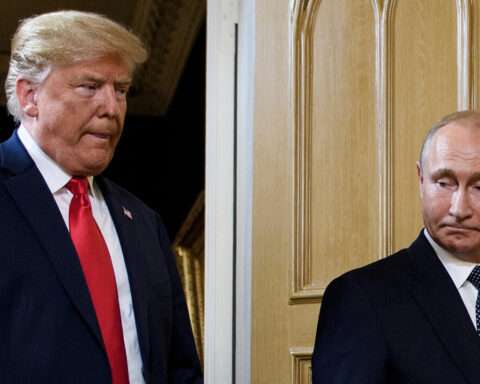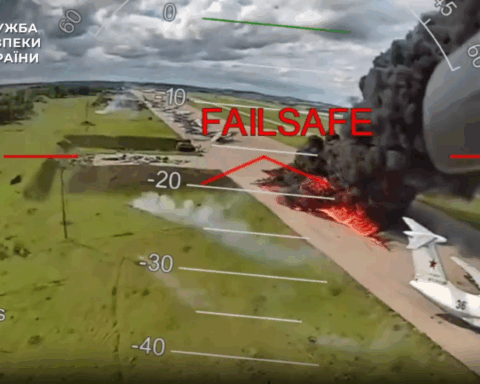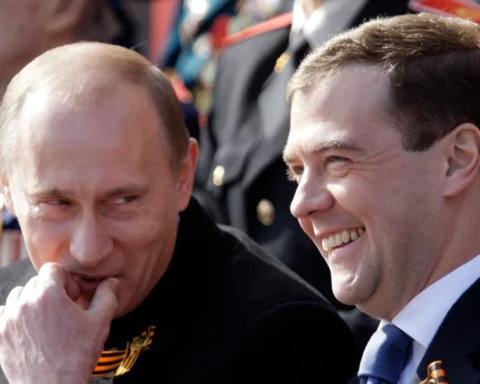More than 75,000 Russian soldiers — about half the force sent by Moscow to invade Ukraine in February — are believed to have been killed or wounded, a U.S. lawmaker said, as Kyiv was reportedly stepping up its counteroffensive to retake occupied Kherson region.
Representative Elissa Slotkin (Democrat-Michigan), who spoke to CNN after attending a classified briefing with officials from President Joe Biden’s administration, said the figure was “huge.”
“We were briefed that over 75,000 Russians have either been killed or wounded, which is huge. You’ve got incredible amounts of investment in their land forces, over 80 percent of their land forces are bogged down, and they’re tired,” Slotkin said.
Military casualties are a state secret in Russia even in peace time, and there are no updated official figures available on Moscow’s military’s death toll. The most recent CIA estimate was that 15,000 Russian forces had been killed in fighting.
Slotkin, who recently returned from a trip to Ukraine, said the next three to six weeks could be crucial for the direction the conflict could take.
“I think that what we heard very firmly from President [Volodymyr] Zelenskiy and reinforced today is that the Ukrainians really want to hit Russia in the teeth a few times before the winter comes, put them in the best position possible, particularly hitting them down south,” Slotkin said.
The new numbers, if confirmed, would mean heavy losses for Russia as Ukraine presses ahead with a counteroffensive in the Russian-occupied southern portion of the country to retake the strategic city of Kherson.
The city, which had a population of 290,000 before the war, is currently under a Moscow-appointed administration after falling early on in the war.
Britain’s Ministry of Defense said in its daily intelligence bulletin early on July 28 that Ukraine’s counteroffensive in Kherson was gathering momentum and has “highly likely established a bridgehead south of the Ingulets River, which forms the northern boundary of Russian-occupied Kherson.”
Regaining control of the city would give Ukrainian forces a foothold to reclaim parts of the Black Sea coast.
British intelligence confirmed that the Antonivskiy Bridge near Kherson, which had been first damaged last week, was struck again on July 27 “and it is highly likely that the crossing is now unusable.”
Antonivskiy is one of the three bridges across the Dnieper River damaged by Ukrainian forces with the help of its new long-range artillery. Russia relies upon the bridges to supply the areas under its control.
British intelligence said that Kherson, the most politically significant population center occupied by Russia, is now “virtually cut off” from the other Russian-occupied territories.
Losing Kherson would severely undermine Russia’s attempts to paint the occupation as a success, British intelligence said.
A Ukrainian defense official said Russian troops were, in turn, engaged in a massive redeployment in the south of the country, including the area of the Ukrainian counteroffensive.
Security Council Secretary Oleksiy Danilov made the comments on Ukrainian television on July 27, saying the redeployments were taking place in the direction of the Kherson, Melitopol, and Zaporizhzhya regions, and the Russians were bringing in additional forces.
Danilov also said that Ukraine is now receiving numerous weapons from its Western partners.
“What we are getting now is a huge amount of help,” he added.
The weapons supplied include high-mobility artillery rocket systems (HIMARS) from the United States. HIMARS have a longer range and are more precise than the Soviet-era artillery that Ukraine had in its arsenal. Ukrainian officials have said their deployment has been critical in the fight to repel Russian troops and to strike their supply lines.
Nataliya Humenyuk, spokeswoman for Operational Command South, said earlier on Ukrainian television that the Ukrainian counteroffensive had made advances near Kherson.
“The counteroffensive in the south of Ukraine is moving forward. The Russian Army is demoralized,” she said, adding that two villages — Andriyivka and Lozove — had been liberated, and Ukrainian forces were strengthening their positions.
WATCH: Twenty-three-year-old Ukrainian soldier Ivan Yevtushenko died in March in the Kyiv region, near the village of Moshchun. A direct hit by Russian forces took his life and his body could only be identified recently. His village of Andriyivka said farewell in an emotional funeral on July 26.
In Kherson, Ukraine’s Defense Ministry said a police officer was killed and another one was injured on July 27 by an explosive device planted by the Ukrainian “resistance movement.”
The ministry’s Main Directorate of Intelligence said the device was set off by radio control on a street just north of the city center.
The directorate recently urged citizens in the Kherson region to reveal where Moscow’s troops were living and which locals were collaborating with the occupying authorities.
Moscow-backed separatists claimed on July 27 to have seized control of Ukraine’s second-largest coal-fired power plant near the city of Svitlodarsk with the help of Russian mercenaries from the notorious Kremlin-linked Vagner Group.
Oleksiy Arestovych, a Ukrainian presidential adviser, said in an interview posted on YouTube that Russia had achieved “a tiny tactical advantage” by capturing the Vuhlehirsk power plant.






